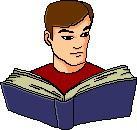
In our last installment, we examined the first of nine secret storytelling elements that work like magic to hook your audience and all but guarantee a successful novel or movie.
That first element was Undeserved Misfortune. Our second element is closely related to the first and it is, drum roll please, the Villain. A properly developed villain will automatically create Undeserved Misfortune. Remember our example Undeserved Misfortune from the movie Ghost? Well, the multiple examples of Undeserved Misfortune from Ghost were created from a single source: the Villains. One of the villains actually murdered Patrick Swayze, and then the second villain deepened the evil by attempting to seduce Demi Moore and embezzle a large sum of money.
With a properly developed villain, it is impossible NOT to have Undeserved Misfortune.
Here’s a secret known to less than five people in the entire world: the villain is more important than the hero. Yes, it’s true. Remember that big budget Lone Ranger movie that flopped a couple of years ago? Sure, it was a lousy movie, but a lot of lousy movies become hits (as long as they contain these elements we are discussing).
The reason why The Lone Ranger movie flopped comes down to three primary reasons, and one of them is the poorly conceived villain. The Lone Ranger and Tonto are great heroes. Everyone knows them. But here’s a quick quiz: how many Lone Ranger villains can you name? I can’t think of any, can you?
Now how many Batman villains can you name? (Penguin, Riddler, Catwoman, the Joker, etc.) How many Spiderman villains can you name? (Kingpin, Dr. Octopus, etc.) Heroes are made by their villains, not the other way around. The Lone Ranger does not contain any iconic villains and the villains in the movie were horribly drawn.
Think about it. Who is James Bond without Rosa Klebb, Oddjob, Goldfinger, Blofeld, and the others. Who’s Dorothy without the Wicked Witch? Who’s Sherlock Holmes without Moriarty or the Hound of the Baskervilles? Westerns are out of favor today, not because they’re out of style, but because dull-thinking leftists have made it taboo to show Indians as villains, despite the fact that many of them were. If the villain were brought back to the western, the people would come.

Before Uma Abedin and Valerie Jarrett, there was … Rosa Klebb!
Audiences love a great villain, whether in movies, books, sports (Sonny Liston, Muhammed Ali, Andre the Giant, the Yankees), or real life (Bonnie and Clyde, Dillinger, Noriega, Qhadafi, Bin Laden). Villains are so important when it comes to manipulating human emotion, that within minutes of every false flag terror event (Boston, Sandy Hook) or political hit (JFK, RFK), the media is crowing nonstop about the alleged villain! Have you ever wondered how the media has complete biographies and dossiers about these made-up villains before the crime scene has even been investigated? The spooks who prepare the bios for these patsies would make excellent Hollywood screenwriters. Heck, maybe they are Hollywood screenwriters.
Your villain has to be concrete, but he/she does not have to be a human. Your villain can be a shark (Jaws), the elements (Twister, A Perfect Storm), the woods (The Blair Witch Project), a computer (Hal from 2001), etc.
Your hero can even be a villain (The Godfather, Scarface), as long there’s an even worse villain for the audience to root against.
If you’re writing a mystery, the villain is often left hidden until the end of the story. If that’s the case, you’ll have to present secondary villains to create obstacles for the hero: the crusty police commissioner, the nosy reporter, the arrogant suspect who appears to be guilty, etc.
The tone of the villain has to suit the tone of your story. You can’t have a costumed super-villain in a family drama, nor a family-type villain in a superhero story.
Villains can fall into types. The Holy Fool is a villain used in James Bond and superhero type stories. These are characters that plot to take over the world, or pull a grand heist, like Goldfinger, setting off a nuke in Fort Knox.
The Arrogant Cad is a villain often found in romantic comedies and broad comedies. He can be the stuffy suitor for the heroine, or the conceited know-it-all types you see in Rodney Dangerfield type movies.
Hitchcock often used a sort of Genteel Villain, someone who was cultured, educated, and pleasant to the outside world, yet capable of great evil.
The Dumb Bully is a villain seen in teen comedies, such as Biff in Back to the Future.
The better your villain, the better your hero will look when they defeat the villain. It’s also a good idea to bring your villain into the story as early as possible. Your Villain will create Undeserved Misfortune for one of your main characters, thus hooking your audience into the story. They will be unable to stop reading until they see the villain defeated and the Undeserved Misfortune removed or resolved.
How are the villains in your novel?

